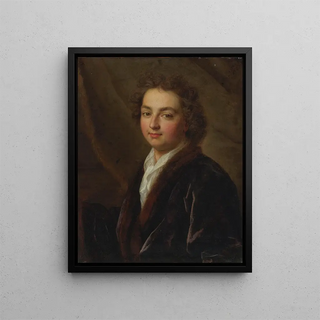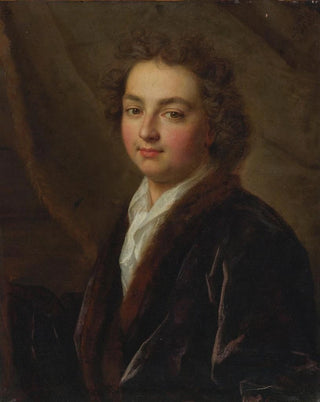Art print | Portrait of a man (Conflict of cases) - Nicolas de Largillière


View from behind

Frame (optional)
Portrait of a Man (Case Conflict) - Nicolas de Largillière – Captivating Introduction
In the vast panorama of art history, certain works stand out for their ability to capture the essence of an era while offering a fascinating glimpse into human psychology. The "Portrait of a Man (Case Conflict)" by Nicolas de Largillière is one of these iconic pieces. Created in the early 18th century, this artwork does more than depict an individual; it evokes a moment of intellectual and emotional tension that still resonates today. Through this portrait, Largillière invites us to explore the subtleties of inner conflict, immersing us in a universe where light and shadow intertwine to bring a complex character to life.
Style and uniqueness of the work
Nicolas de Largillière's style is often characterized by an exceptional mastery of light and color. In "Portrait of a Man (Case Conflict)," this mastery is expressed through delicate nuances that give striking depth to the subject's face. Largillière skillfully plays with contrasts, creating a volume effect that makes the character almost tangible. The richly detailed clothing texture also demonstrates his ability to represent the material world with remarkable precision. But beyond technique, it is the artist's capacity to convey emotion that makes this work unique. The intense gaze of the protagonist, both thoughtful and troubled, challenges us and prompts us to reflect on the thoughts that assail him. This silent dialogue between the viewer and the subject is at the heart of the magic of this artwork.
The artist and his influence
Nicolas de Largillière, an emblematic figure of French portraiture, established himself during his career through his unparalleled talent and keen sense of observation. Trained in a rich artistic context, he integrated influences from Flemish masters while developing a style that is uniquely his own. His work, although rooted in classicism, opens up to innovations that foreshadow later movements. Largillière had a significant impact on his contemporaries, inspiring many artists to explore the psychology of their subjects.

Matte finish

View from behind

Frame (optional)
Portrait of a Man (Case Conflict) - Nicolas de Largillière – Captivating Introduction
In the vast panorama of art history, certain works stand out for their ability to capture the essence of an era while offering a fascinating glimpse into human psychology. The "Portrait of a Man (Case Conflict)" by Nicolas de Largillière is one of these iconic pieces. Created in the early 18th century, this artwork does more than depict an individual; it evokes a moment of intellectual and emotional tension that still resonates today. Through this portrait, Largillière invites us to explore the subtleties of inner conflict, immersing us in a universe where light and shadow intertwine to bring a complex character to life.
Style and uniqueness of the work
Nicolas de Largillière's style is often characterized by an exceptional mastery of light and color. In "Portrait of a Man (Case Conflict)," this mastery is expressed through delicate nuances that give striking depth to the subject's face. Largillière skillfully plays with contrasts, creating a volume effect that makes the character almost tangible. The richly detailed clothing texture also demonstrates his ability to represent the material world with remarkable precision. But beyond technique, it is the artist's capacity to convey emotion that makes this work unique. The intense gaze of the protagonist, both thoughtful and troubled, challenges us and prompts us to reflect on the thoughts that assail him. This silent dialogue between the viewer and the subject is at the heart of the magic of this artwork.
The artist and his influence
Nicolas de Largillière, an emblematic figure of French portraiture, established himself during his career through his unparalleled talent and keen sense of observation. Trained in a rich artistic context, he integrated influences from Flemish masters while developing a style that is uniquely his own. His work, although rooted in classicism, opens up to innovations that foreshadow later movements. Largillière had a significant impact on his contemporaries, inspiring many artists to explore the psychology of their subjects.






